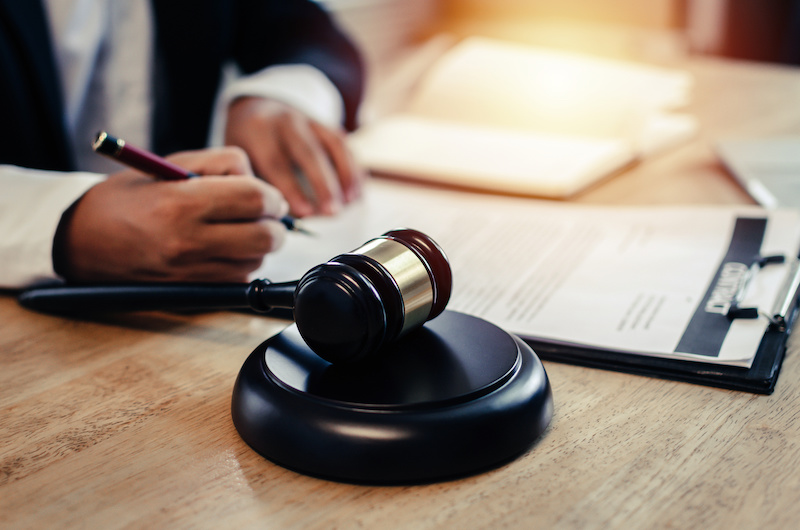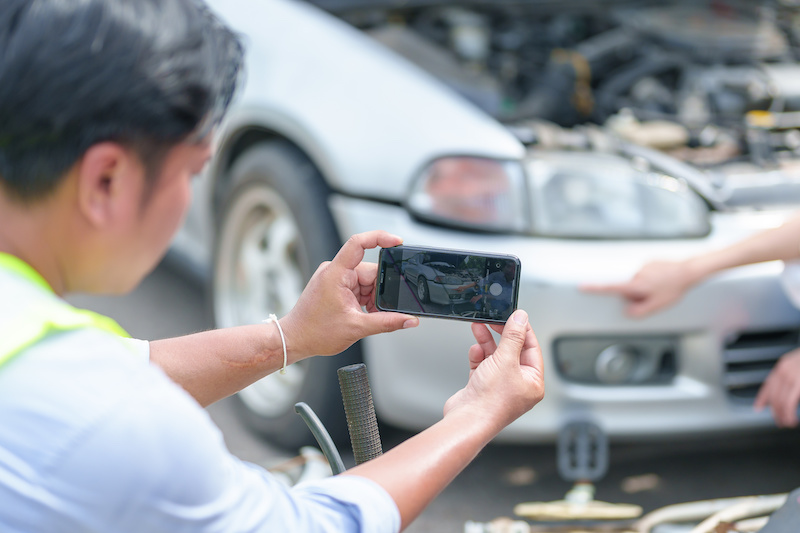Dealing with hit-and-run accidents can be a daunting ordeal.
The shock, the trauma, the confusion… it’s overwhelming.
Navigating through such incidents is no walk in the park. You’re left flummoxed, asking yourself what to do and how to manage all that comes afterward.
Hit-and-run accidents are not just about damaged vehicles or physical injuries; they also involve legal complexities that need careful handling.
Table of Contents:
- Decoding Hit and Run Accidents
- What to Do After a Hit-and-Run Accident
- Who is Liable in a Hit and Run Accident?
- Unidentified Drivers in Hit and Run Accidents: A Complex Scenario
- Recovering Damages After a Hit-and-Run Accident
Decoding Hit and Run Accidents
In the realm of personal injury law, hit-and-run accidents serve as a stark example of negligence.
Offenders may face serious repercussions, like hefty fines or jail time, for committing this unlawful act. But what exactly constitutes such an accident?
The Legal Definition: More Than Just Leaving The Scene
A universal understanding across jurisdictions is that fleeing from an accident scene falls under ‘hit-and-run’. However, it isn’t limited to just collisions with other vehicles, bicycles, and pedestrians – hitting property like mailboxes or fences also counts if you don’t stop.
Moreover, some states consider not reporting an accident within a reasonable time as partaking in this offense too. It’s crucial for drivers to be aware of these obligations post-collision.
Paying The Price: Consequences Of A Hit And Run Accident
Facing up to one’s actions after causing harm on the road is both ethically right and legally required; failing to do so results in serious repercussions. These range from financial penalties reaching thousands, depending on state laws…
To potential jail sentences when injuries are inflicted during incidents. In more grave scenarios involving substantial damage or loss of life due to failure to stop at the site – felony charges could come into play, carrying heavier punishments including longer prison terms.

Your Duty After An Accident:
All motorists bear certain responsibilities following a traffic collision, regardless of the severity level. Duties typically encompass halting immediately (or as safely as possible), rendering necessary aid – e.g., dialing 911 for medical help, plus exchanging pertinent details such as name, address, and insurance information before leaving the scene. Not adhering to these rules often leads to being charged with a “hit-and-run”.
What to Do After a Hit-and-Run Accident
The moments following a hit-and-run accident can be disorienting. Yet, it’s critical that you take the right steps to ensure your safety, preserve crucial evidence for potential legal proceedings, and secure compensation for any damages incurred.
Gathering Evidence: The First Step Towards Justice
If physically possible post-incident, make sure to gather as much information from the scene as you can. This includes taking photos or videos of your injuries along with the damage inflicted on your vehicle. Witnesses are invaluable assets during such incidents – if there were any present at the time of occurrence, try securing their contact details alongside statements recounting what they saw.

Reporting Incident To Authorities: Building A Legal Foundation
Filing an official report with law enforcement should follow immediately after collecting preliminary data from the scene. Not only does this serve as valid documentation, but it also helps establish substantial ground when filing insurance claims or pursuing further legal recourse later on.
Prioritizing Health: Seeking Immediate Medical Attention
Your health takes precedence over everything else – irrespective of how minor injuries may seem initially, always seek medical attention without delay. This ensures timely treatment while simultaneously creating necessary records linking the sustained injury directly back to the said accident.
Navigating Insurance Claims Post-Hit And Run Accidents:
Regardless of whether the other driver remains unidentified, promptly notifying the respective insurance company about the incident is an essential step forward. Depending upon local laws plus specific policy terms, uninsured motorist coverage could potentially cover certain costs linked with property damage or personal injury resulting from these accidents. However, considering the complexity surrounding this area, consulting experienced professionals before proceeding is recommended. Read more here
Who is Liable in a Hit-and-Run Accident?
In the aftermath of a hit-and-run accident, determining liability can be quite complex. In general terms, the individual who acted negligently or recklessly causing the incident should bear responsibility.
The difficulty arises when the person responsible for causing the incident chooses to flee, making it hard for them to confront the results of their behavior. Let’s delve into some scenarios that may unfold regarding liability after such an unfortunate event.
Holding The At-Fault Driver Accountable
If things go as they ideally should, law enforcement would successfully identify and locate at-fault drivers using evidence collected from crash sites or witness testimonies. Once proven guilty of being responsible for accidents caused by their negligence or reckless behavior, these individuals are typically held financially accountable for the damages inflicted on victims – including medical bills due to injuries sustained during incidents, along with property damage costs among other losses.
Filing Claims With Your Insurance Company
In situations where authorities fail to identify or apprehend those at fault, you might need assistance from your own insurance company under uninsured motorist coverage (UM). This specific type of coverage provides compensation if you’re involved in an accident with someone lacking adequate insurance – which often happens during hit-and-run cases. However, remember that every case has its unique aspects; hence, understanding these principles generally doesn’t substitute professional legal advice tailored specifically to your situation.
Potential Liability Of Other Parties
- Sometimes, other parties could share some level of blame too. For instance, if road conditions significantly contributed to your accident because local government entities failed to maintain safety standards like proper signage around construction zones, then they potentially hold partial accountability.
- A vehicle manufacturer might also find themselves partially liable if faulty parts were directly linked to incidents occurring – for example, brakes failing unexpectedly resulting in crashes despite driver attempts to avoid collisions.
Unidentified Drivers in Hit and Run Accidents: A Complex Scenario
Drivers often flee the scene without providing any identification or offering aid to victims.
Navigating Insurance Claims with Unidentified Drivers
Filing a claim after being hit by an unidentified driver can be tricky. However, uninsured motorist coverage (UMC) typically provides protection under these circumstances.
Leveraging Law Enforcement Agencies’ Role
In dealing with accidents involving anonymous drivers, law enforcement agencies play critical roles by collecting potential identifying evidence from the scene.
This could involve analyzing available CCTV footage or interviewing witnesses if possible. Despite their best efforts, there are times when finding these elusive drivers proves impossible due to a lack of sufficient clues about their identity.
Suing An Unknown Driver: Is It Possible?
Pursuing legal action against anonymous culprits may seem daunting yet not entirely unachievable; serving court papers on someone whose identity isn’t known presents unique challenges.
Courts occasionally permit plaintiffs to serve notice via publishing lawsuit details in local newspapers, hoping that this will prompt defendants to come forward voluntarily. However complicated this process might appear, consulting experienced personal injury attorneys like those at Silver Injury Law would offer invaluable guidance throughout your journey toward justice.
Recovering Damages After a Hit-and-Run Accident
After a hit-and-run accident, victims may face difficulties in recovering damages due to physical injuries, medical bills, lost wages, pain and suffering, or even punitive damages.
The Financial Impact: Medical Expenses
A victim’s health should always take precedence following any incident. The financial toll for immediate treatments like emergency care or surgeries, as well as ongoing costs for therapies, could mount up quickly.
For severe cases involving long-term care due to spinal cord damage or brain injury, the economic impact becomes significantly higher. An experienced personal injury attorney plays an essential role in accurately calculating these past and future expenses, ensuring you receive full compensation.

Economic Losses: Lost Wages
An inability to work resulting from your injuries means potential recovery for lost income. This includes not just missed paychecks but also projected earnings that have been compromised by disability caused by the accident.
Pain and Suffering Damages
Punitive Damages in Special Circumstances
If the court finds the driver’s conduct particularly egregious (such as drunk driving), they might award additional compensatory damages to the victim called ‘punitive damages’. These serve to punish the wrongdoer further and deter similar behavior in others in the future.




